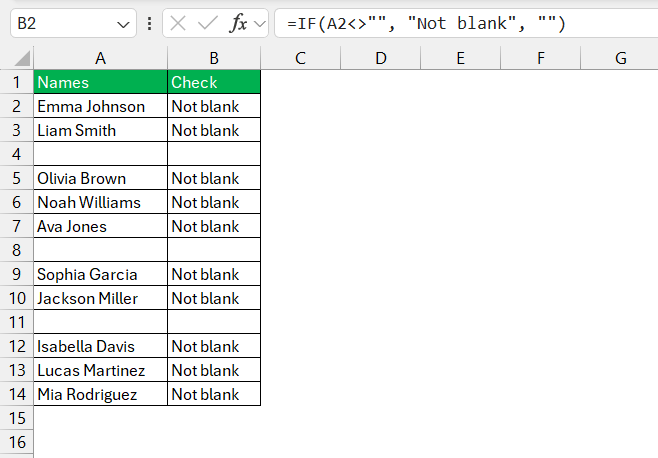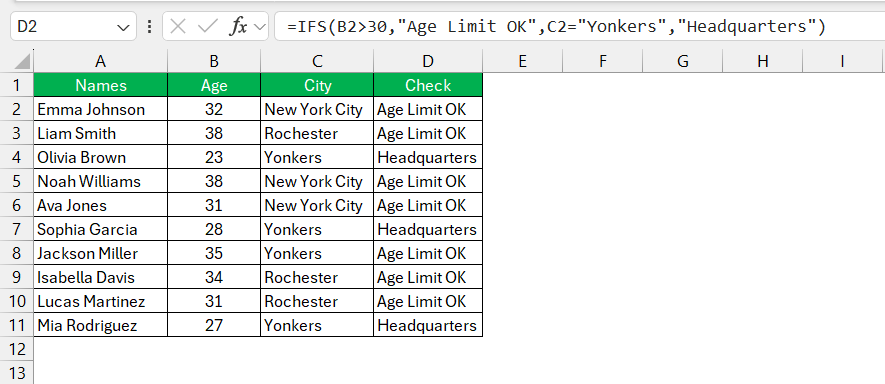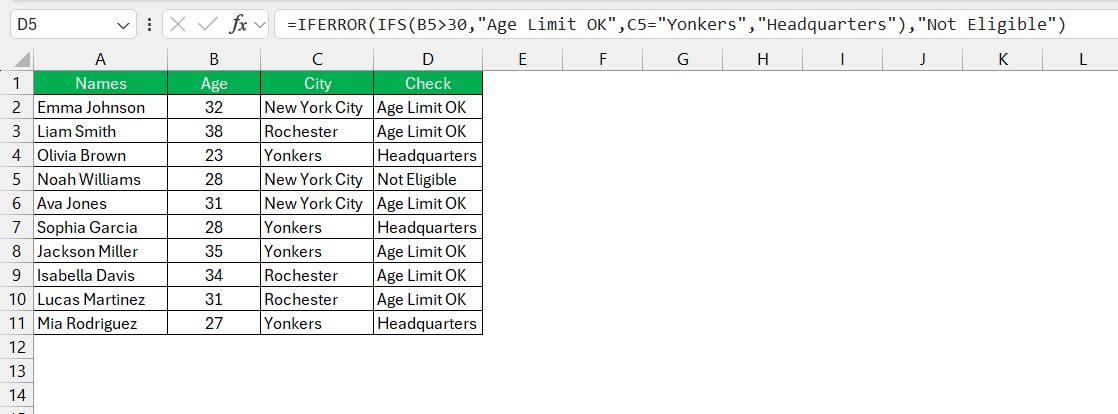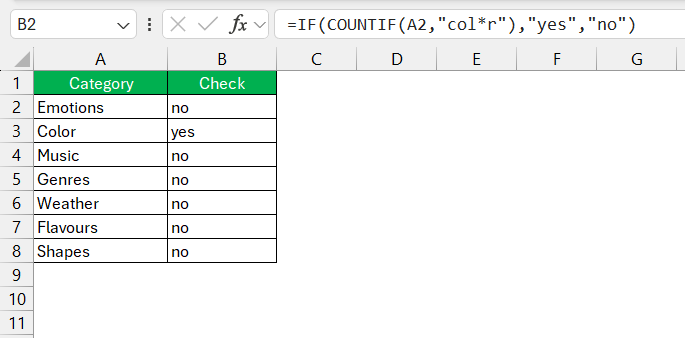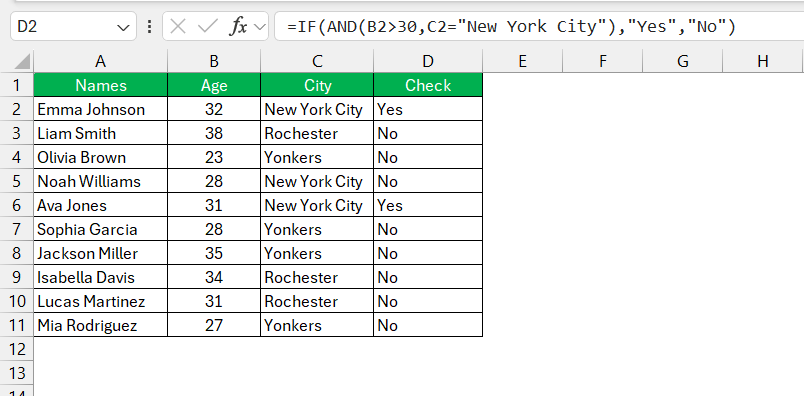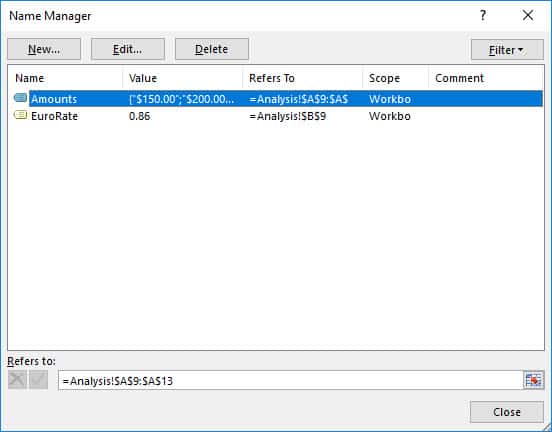Microsoft Excel offers powerful methods to check and analyze cell contents, from verifying data to searching for specific strings and meeting criteria. Mastering these techniques is essential for efficient data analysis and management. This guide will explore key functions to check if cell contains text in Excel.
Key Takeaways:
- Mastering cell content is fundamental for data analysis in Excel, allowing you to extract necessary text or identify specific strings within cells efficiently.
- Text functions like
IF,IFS, andIFERRORare essential tools for managing and manipulating text data, automating tasks, and ensuring data integrity. - Wildcards (
*and?) make searches more flexible and powerful, enabling you to find partial text matches, handle typos, and adapt to variations in your data. - Combining functions such as
IFwithAND/ORallows for complex, nuanced text checks, enhancing the depth and precision of your data manipulation capabilities. - The
SUMIFSfunction is excellent for summing cells that meet multiple criteria, and it works well with wildcards for partial text matching, streamlining data analysis and aggregation tasks.
Introduction: Unlocking Excel’s Potential
The Power of Text Analysis in Excel
Diving into Excel, you might find yourself amidst a treasure trove of data that needs sorting, analyzing, or just plain understanding. The true beauty lies in its ability to manage and parse through text. Text analysis within Excel can change a mundane spreadsheet into a goldmine of insights. Imagine being able to instantly sift through paragraphs to find key terms or summaries. That’s the power you harness with Excel at your fingertips.
What This Guide Offers to Excel Users
For both seasoned spreadsheet warriors and newcomers alike, this guide is your ally in the quest for mastery over text in Excel. You’ll unearth time-saving hacks that transform how you interact with cells filled with text. They will equip you with the know-how to tackle anything from simple text searches to complex data management tasks. Imagine turning hours of work into minutes—this guide offers the map to that reality.
Grasping the Basics
Understanding Cell Content in Excel
Cell content in Excel is the bedrock of data analysis and manipulation. Each little grid in your workbook can be a container for anything—numbers, words, dates, or even a mix. Being proficient at navigating this content means you can extract just the text you need or discern whether a cell contains a certain string of characters. Think of it as learning the language of your data—once you understand it, you can start having real conversations with your spreadsheet.
The Role of Text Functions in Data Management
Text functions in Excel are the unsung heroes of data management. They’re the arsenal you deploy to slice, dice, and serve data just the way you need it. Need to pull a name from an email address? Got it. Want to combine first and last names from separate cells? Consider it done. Text functions allow you to automate tiresome tasks, preserve data integrity, and present your findings. They’re not just functions; they’re your toolkit for crafting clarity from chaos.
Essential Text Formulas You Should Know
IF Function
The “IF” function is a fundamental tool in your Excel utility belt, especially when playing with text. You can set it to examine cell contents and return specific results based on the text within. Checking a cell for any text presence is like asking, “Hey, is anybody home?” The basic IF formula here is your doorbell. By using =IF(A2<>"", "Not blank", ""), you’re essentially checking if a cell isn’t empty and marking it as “Not blank” if it contains something.
This simple yet powerful check helps avoid wasting time on blank cells and focuses your attention where data actually exists – a huge time-saver in data cleanup and analysis.
But the fun doesn’t stop there!
IF Function Variation – IFS & IFERROR
Excel offers variations like “IFS” for multiple conditions, and “IFERROR” for cleaner error handling.
Your formulas become robust, capable of handling diverse text-related conditions and delivering the precise output you need for data-driven decision-making.
Advanced Tricks to Enhance Productivity
Employing Wildcards for Flexible Searches
Wildcards in Excel are the jokers in the deck, playing any card you need. Want to find variations of a word, like “color” and “colour”? Easy—use =col*r in a SEARCH function.
By employing wildcards, such as the asterisk (*) to match any number of characters or the question mark (?) for one, your searches become flexible and powerful. They can help you match partial text strings, navigate through typos, and adapt to unpredicted variations in your data set.
Combining Functions for Complex Conditions
When one function just won’t cut it, Excel allows you to mix and match to create a formula cocktail perfectly suited to your needs. Imagine combining “IF” with “AND”/”OR” for multifaceted logic within “IF” for nuanced text checks.
By combining functions, you create sophisticated formulas that can sift through data like a fine sieve, catching the conditions that matter most. This blend not only automates complex tasks but also introduces an unparalleled level of depth to your data manipulation abilities.
Tips for Efficient Text Formulas
Avoiding Common Pitfalls in Text-Based IF Formulas
When you’re working with Excel, mastering text formulas, especially those utilizing the ‘IF’ function, can streamline tasks and enhance productivity. However, a small slip-up within your formulas can lead to errors and frustration. Keep these tips in mind to sidestep common pitfalls:
Firstly, ensure that all your parentheses are properly closed. This might seem trivial, but missing a parenthesis can totally throw off your calculation. Each ‘IF’ function should end with a closing parenthesis, and if you’re dealing with nested functions, each level should have its own closure.
Secondly, use the correct comparison operator. Depending on the condition, choose from “=”, “>”, “<“, “<=”, or “>=”. Even a minor mix-up here could set you up for inaccurate results.
Lastly, always remember to enclose text values within double quotes. It may seem like a small detail, but forgetting those quotation marks will prevent your formulas from executing properly.
To make sure your formulas work without a hitch, it’s good practice to test them with various text scenarios. This step not only checks for accuracy but also gives you the opportunity to fine-tune your formula’s efficiency.
Imagine you have to ensure that a cell displays “Correct” if another cell contains the word “apple.” A simple IF function looks like this: =IF(A1="apple", "Correct", "Incorrect"). But, This formula would stumble if you forgot to enclose “apple” within quotes, or if you missed the closing parenthesis.
By watching out for these common slip-ups and testing diligently, you’ll greatly reduce the likelihood of formula errors and make your workflow much smoother. Remember, precise formulas result in precise analyses in the data-driven world you navigate.
Best Practices for Maintaining Formula Readability
Maintaining readability in your formulas not only helps you to understand them better but also makes it easier for others to follow your logic. Here are some best practices to keep your text formulas clear and comprehensible:
Start by splitting complex formulas into smaller parts. If you find yourself staring at a screen full of nested conditions, try breaking them into separate cells. This can dramatically increase comprehension and simplify troubleshooting.
Secondly, make use of named ranges. Instead of using cryptic cell references like ‘D4’, name the range something meaningful like ‘Total_Sales’. This small step can go a long way in making your formulas readable at a glance.
Comments can also be your allies. Excel doesn’t traditionally support comments within formulas, but you can use a helper column to explain the logic behind your formula. Another approach is using the ‘N()’ function, which allows you to insert a comment that won’t affect the formula’s result, like so: =IF(A1>100,"High", "Low") + N("Checks if the value in A1 exceeds 100").
Utilize white space strategically. Inserting spaces around operators and after commas within a formula improves readability significantly. Compare =IF(A1>100,"High","Low") with =IF(A1 > 100, "High", "Low"). The latter is undoubtedly easier to read.
Additionally, keep consistent formatting. If you develop a personal or team standard for formula writing, such as always capitalizing function names and keeping a space after a comma, it will make your work more organized and accessible to everyone involved.
Applying these practices transforms your formulas from cryptic strings of characters into logical, easily interpretable expressions. So the next time you’re reviewing an Excel sheet, make readability a priority — future you (and anyone else who uses your spreadsheet) will surely be grateful.
FAQ: Navigating Text Formulas with Confidence
How do I check if a cell contains a specific string of text?
To check if a cell contains a specific string, use the formula: =IF(ISNUMBER(SEARCH("specific text", cell)), "Yes", "No"). Replace “specific text” with the string you’re looking for, and “cell” with the cell reference. If the string is there, Excel will return “Yes”; otherwise, “No”.
Can I search for multiple text strings within a single cell?
Absolutely! To search for multiple text strings within a single cell, use a formula like: =IF(AND(ISNUMBER(SEARCH("text1", cell)), ISNUMBER(SEARCH("text2", cell))), "Yes", "No"). Replace “text1” and “text2” with your keywords, and “cell” with the cell reference. If both strings are present, Excel delivers a “Yes”.
How do you check if a cell contains specific in Excel?
To check for specifics in Excel, you can tailor the IF and SEARCH combo: =IF(ISNUMBER(SEARCH("specific text", A1)), "Found", "Not Found"). Replace “specific text” with your criteria and A1 with the target cell reference. This returns “Found” if the specific text is in the cell, “Not Found” otherwise.
Why wrap asterisks around search term?
Wrapping asterisks around a search term in Excel creates a wildcard effect, which tells Excel to find any instances where your search term appears, regardless of what text might come before or after it. This is useful for finding variations of a word within text strings.
What about the sumifs function?
The SUMIFS function is superb for summing cells that meet multiple criteria, and it works well with wildcards for partial text matching. For example: =SUMIFS(sum_range, criteria_range, "*text*"). It sums values in sum_range where corresponding cells in criteria_range contain “text” anywhere within them.
John Michaloudis is a former accountant and finance analyst at General Electric, a Microsoft MVP since 2020, an Amazon #1 bestselling author of 4 Microsoft Excel books and teacher of Microsoft Excel & Office over at his flagship MyExcelOnline Academy Online Course.

